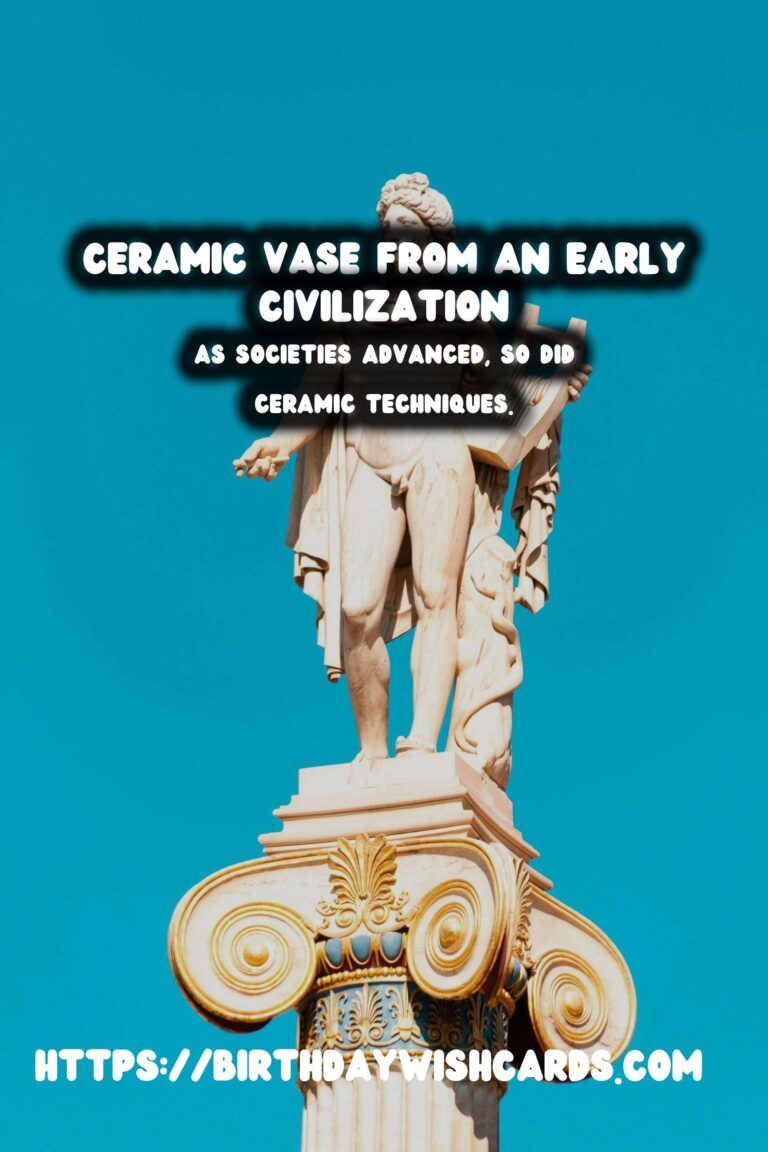
Ceramics, the craft and art form that has been shaping human civilization for thousands of years, presents an intriguing journey through time. From the humble beginnings in prehistoric communities to its status as a major artistic and functional medium today, ceramics have played a pivotal role in various cultures across the globe.
The Origins of Ceramics
Ceramics are artifacts made from clay that has been subjected to high temperatures. The history of ceramics dates back to ancient times, around 24,000 BC, with early discoveries being small figurines and pottery related to daily life needs. These early pieces were hand-shaped and sun-dried, marking humanity’s initial attempts to transform natural materials into durable objects.
Ancient Civilizations and Their Influence
As societies advanced, so did ceramic techniques. Around 10,000 BC, the advent of agriculture led to a need for storage solutions, prompting the development of more sophisticated pottery methods. Ancient Egypt, Mesopotamia, and the Indus Valley civilizations began to refine their ceramic techniques, creating items that were both functional and ornately decorated. The Chinese civilization, in particular, is renowned for its innovation in ceramics, developing methods that produced exquisite porcelain and stoneware around 2000 BC.
Medieval to Modern Times
Throughout the Middle Ages, the production and trade of ceramics flourished. The Islamic world’s intricate tiles and pottery were exchanged along trade routes, influencing European craftsmanship significantly. The Renaissance brought further advancements as artists began to explore ceramic art’s expressive potential.
Industrial Era and Beyond
The Industrial Revolution sparked a new era for ceramics, with mechanization enabling mass production. This period saw ceramics becoming central to industrial and domestic applications—ranging from sanitaryware to electrical insulators. Today, the art of ceramics continues to evolve, driven by modern technology and digital innovations, leading to exciting new possibilities in both design and sustainable practices.
The Artistic Significance of Ceramics Today
In contemporary art, ceramics are cherished for their versatility, offering artists endless possibilities for creativity and expression. The medium’s resurgence in popularity highlights a desire for tactile, hand-crafted items amidst a digital age. From utilitarian vessels and architectural installations to avant-garde sculptures, modern ceramics continue to reflect cultural narratives and personal stories.
The story of ceramics is an ongoing dialogue between history, culture, and technology. As we continue to innovate and explore this ancient craft, its capacity to connect us to our past while shaping our future remains unparalleled.
Ceramics, the craft and art form that has been shaping human civilization for thousands of years, presents an intriguing journey through time. As societies advanced, so did ceramic techniques.
#CeramicsHistory #ArtAndCulture

